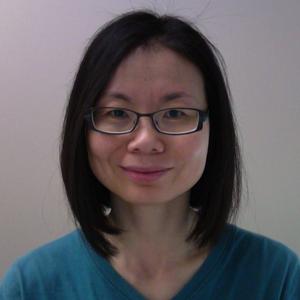Office: MRB 283
Phone: (970) 492-4116
Google Scholar: https://scholar.google.com/citations?user=y4x3LGIAAAAJ&hl=en
Education
- B.S. Wuhan University, China
- Ph.D. University of Iowa, Iowa City
- Postdoc. Stowers Institute for Medical Research
About
Our lab studies the interface between the ubiquitin-proteasome pathway and chromatin regulation. Modification of components of chromatin and its associated machinery by ubiquitin can serve as a regulatory switch that have diverse functions in transcription and DNA repair. We are using a variety of biochemical and cell biology approaches to define the molecular mechanisms that regulate the dynamics of ubiquitin conjugation and deconjugation in these processes.
Ubiquitin (Ub) is a small protein of 76 amino acids. It is ubiquitous among all eukaryotes and it is highly conserved from yeast to man. The covalent attachment of Ub to other proteins, i.e., ubiquitination, is used as a regulatory signal in a broad spectrum of biological processes. These include targeting proteins for proteasomal degradation, intracellular trafficking, transcription activation, DNA damage repair, and chromatin remodeling. These different outcomes are due in part to the versatility of the Ub modification, which can vary in the number of Ub molecules attached and, if polyubiquitin chains are formed, the linkage between ubiquitins in the chain. Moreover, like phosphorylation, ubiquitination is reversible. Proteins are subject to ubiquitination and deubiquitination, and the balance between these competing processes determines the fate of the substrate. Although histones were among the first proteins found to be ubiquitinated, it was demonstrated only recently that ubiquitinated histone H2A is a hallmark of repressed chromatin, and that dynamic ubiquitination and deubiquitination of histone H2B is important for gene activation. We are interested in how these diverse ubiquitin signals are written, erased, and read by the cellular machinery.
Publications
- Crucial roles of the BRCA1-BARD1 E3 ubiquitin ligase activity in homology-directed DNA repairMolecular Cell 83:3679-3691, 2023
- Branched ubiquitin chain binding and deubiquitination by UCH37 facilitate proteasome clearance of stress-induced inclusionsElife 10:e72798, 2021
- Design of genetically encoded sensors to detect nucleosome ubiquitination in live cellsJournal of Cell Biology 220: e201911130, 2021
- High-resolution and high-accuracy topographic and transcriptional maps of the nucleosome barriereLife 8:e48281, 2019
- High-affinity free ubiquitin sensors for quantifying ubiquitin homeostasis and deubiquitinationNature Methods 16: 771–777, 2019
- Recruitment and allosteric stimulation of a histone-deubiquitinating enzyme during heterochromatin assemblyJournal of Biological Chemistry 293: 2498-2509, 2018
- Structural basis for the activation and inhibition of the UCH37 deubiquitylaseMolecular Cell 57: 901-911., 2015
- Generation of nonhydrolyzable ubiquitin–histone mimicsMethods 70: 134-8, 2014
- Ubiquitin signals proteolysis-independent stripping of transcription factorsMolecular Cell 53: 893-903, 2014
- Structural insights into the assembly and function of the SAGA deubiquitinating moduleScience 328: 1025-9, 2010

